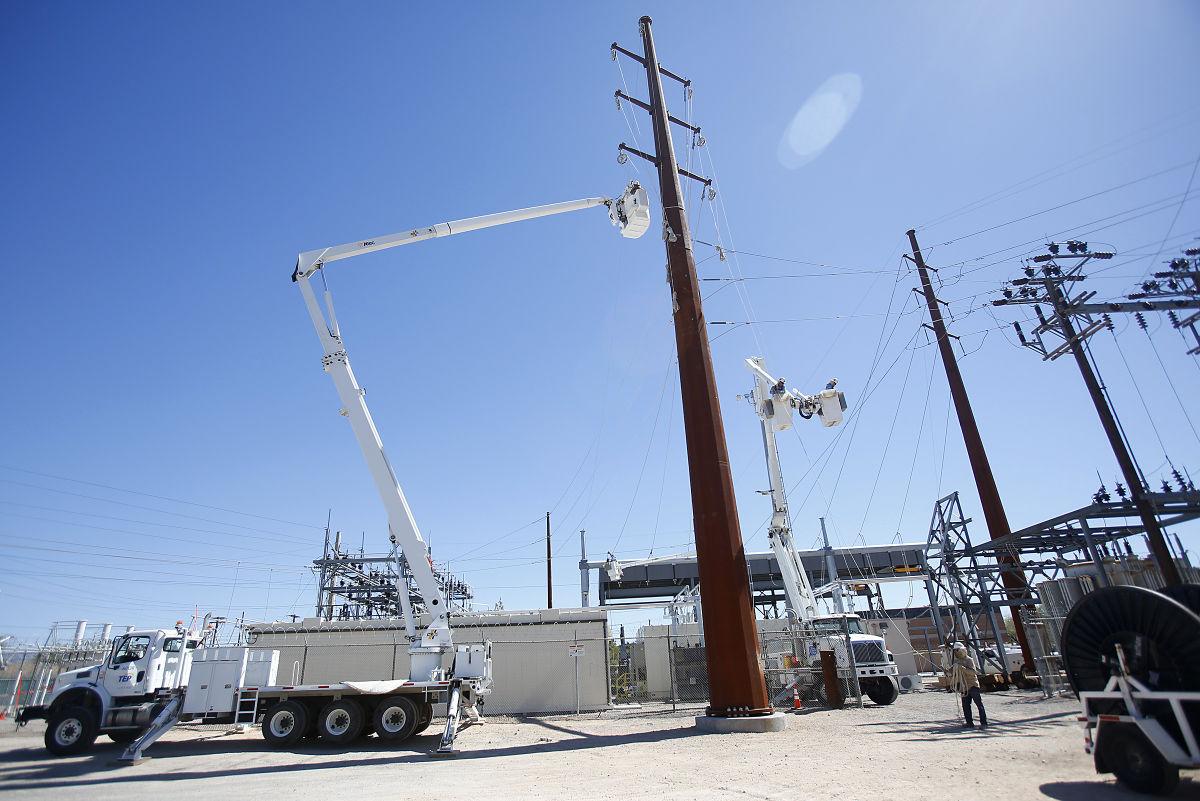The Arizona Corporation Commission has approved a new financing plan for Tucson Electric Power Co. that the company and regulators say will boost TEP’s financial health and lower ratepayer costs over time.
During a meeting in Phoenix on Tuesday, the commission also raised the overall cap on TEP’s long-term debt to $2.2 billion, up from $1.7 billion.
The financing structure is key to allowing the company to refinance long-term and short-term debt, and to build new infrastructure and maintain reliable service, the commission said.
“When a company can increase their credit rating and drop their interest rates on debt, the rate payer is the winner in the long run,” Corporation Commission Interim Chairman Doug Little said in a news release.
TEP said it plans to spend about $1.5 billion through 2019 on capital projects and plans to fund most of those expenses with operating cash flow. But the company said it needs authority to take on new long-term debt in case cash flow falls or capital spending increases.
The utility has seen revenues flatten as customer growth has stalled amid Tucson’s slow economic recovery. The Corporation Commission staff, in its filing on the financing plan, noted that TEP’s customer base grew just 0.7 percent annually from 2010 through 2014, while peak demand fell. The company serves about 415,000 customers in Tucson, Pima County and Fort Huachuca.
In a financing request filed last April, TEP said its financial condition has “improved significantly” since it filed its last financing request in May 2012. TEP and its parent, UNS Energy Corp., were acquired by Canadian utility operator Fortis Inc. in 2014.
Under the deal, Fortis injected $200 million in capital into UNS Energy when the deal closed, and TEP says it received $225 million in equity from UNS in 2014.
TEP noted that its unsecured credit ratings have improved to A3 from Baa2 from Moody’s Investors Service, and to BBB+ from BBB- in Standard & Poor’s Rating Service.
When it filed its financing application in April, TEP had total long-term debt of $1.54 billion, according to regulatory documents.
In the new, four-year financing plan, TEP sought and won authority to issue variable-rate long term debt of up to $450 million, raising the cap on such debt from $350 million. The utility also may receive up to $400 million in equity contributions from UNS Energy and enter into one or more revolving credit agreements totaling no more than $300 million to support new variable-rate notes and bonds.
TEP said its existing core credit facility, providing $200 million worth of revolving credit and $81 million in letters of credit, expires in November.
The Corporation Commission also gave TEP the authority to swap fixed-interest debt with variable-rate debt in order to hedge credit risk, under commission oversight.
TEP says it has been working to gradually boost its equity ratio — essentially the proportion of assets financed by shareholders as opposed to creditors — to 50 percent from just below 50 percent as of the end of the third quarter of 2015.
As part of the Fortis merger agreement, TEP’s ability to pay dividends to its parent company is limited until it reaches 50 percent equity.
The utility proposed, and the Corporation Commission agreed, that a minimum 40 percent equity ratio along with a minimum level of cash be required for new issuances of long-term debt, aside from refinancings or revolving-credit borrowing.
If TEP’s equity ratio falls below 40 percent, the company must file an “equity improvement plan” with the Corporation Commission.





